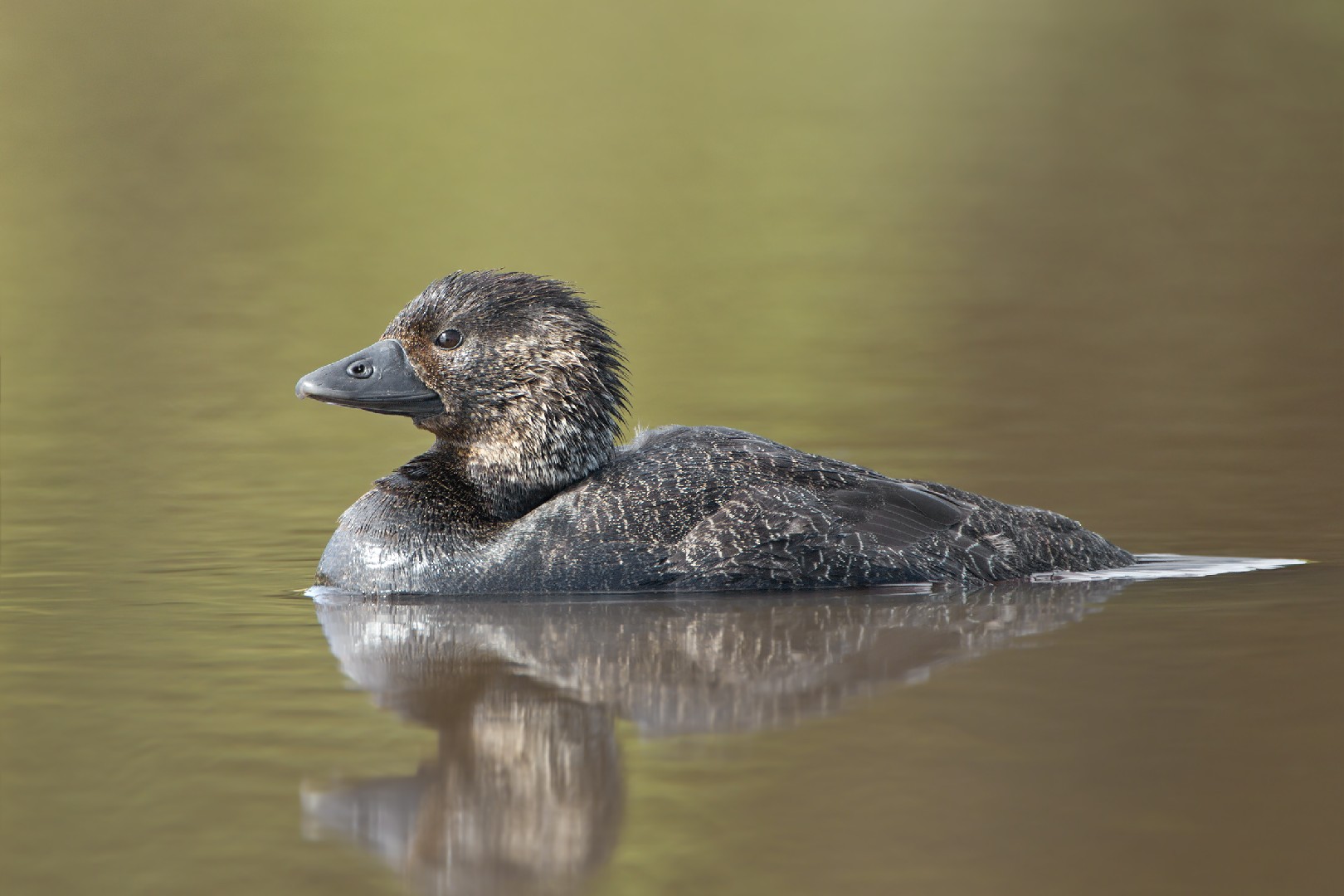Musk Duck
A species of Musk Ducks Scientific name : Biziura lobata Genus : Musk Ducks
Musk Duck, A species of Musk Ducks
Botanical name: Biziura lobata
Genus: Musk Ducks
Content
Description General Info
 Photo By JJ Harrison , used under CC-BY-SA-3.0 /Cropped and compressed from original
Photo By JJ Harrison , used under CC-BY-SA-3.0 /Cropped and compressed from original Description
Adult males are 60 to 70 cm (24 to 28 in) long and have a distinctive large, leathery lobe underneath the bill; females are 47 to 55 cm (19 to 22 in) long and unadorned. Their drab dark grey-brown, slightly pin-striped plumage is inconspicuous and does not differ between the sexes. This species weighs an average of 2,398 g (5.287 lb) in males and 1,551 g (3.419 lb) in females, with the smallest females weighing only 993 g (2.189 lb) and the largest males weighing up to 3,170 g (6.99 lb). On average, they are the second-heaviest diving duck in the world after the common eider, with male musk ducks actually being slightly heavier than male common eiders, but female eiders being rather larger than female musk ducks due to that species' lesser size sexual dimorphism. Musk ducks float very low in the water, almost like a cormorant, and the large, webbed feet are well back on the body. The ducklings are covered in dark brown down. In its native range, the fanned tail is distinctive, allowing to distinguish this species from the freckled duck (Stictonetta naevosa) which has similar size, colouration, and habits. The blue-billed duck (Oxyura australis) has a similarly shaped tail, but the main colour of its males in breeding plumage is a much richer chestnut brown. Females and males in nonbreeding plumage are very similar, however, and if one is not intimately familiar with the slight differences in behaviour, they cannot be told apart from female musk ducks at a distance. Male musk ducks in the breeding season are usually unmistakable due to the large bill lobe. 
Size
55 - 66 cm
Life Expectancy
20 years
Nest Placement
Cavity
Feeding Habits
Musk Duck primarily consumes animal matter, particularly aquatic invertebrates and some fish, with minimal plant seeds. Feeds via diving, often in deep waters, and exhibits foraging alone day or night, with occasional female 'pairs'. Unique in eating small ducks.
Habitat
The musk Duck inhabits a variety of freshwater environments, including marshes, swamps, lakes with abundant reedbeds, as well as rivers and farm dams. While they prefer sheltered and vegetated areas for breeding, outside the season, they disperse to deeper and often saline waters, such as lagoons, sewage ponds, reservoirs, estuaries, and sheltered coastal regions.
Dite type
Omnivorous
General Info
Feeding Habits
Bird food type
Species Status
Musk ducks are sometimes shot by hunters, but are little prized, not being considered good eating. Wholesale clearing and draining of wetlands has impacted on their numbers, as has the widespread rise in Australian water salinity levels, but the species is not presently considered to be in danger. 